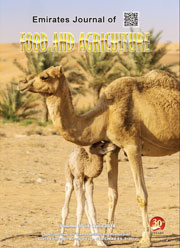REMOTE SENSING IN FOOD PRODUCTION – A REVIEW
DOI:
https://doi.org/10.9755/ejfa.v27i2.19272Keywords:
Remote sensing, Food production, Crop monitoringAbstract
FAO’s most recent assessments indicate that, globally, in 2011–13, about one in eight people in the world are likely to have suffered from chronic hunger, not having adequate food supplies for an active and healthy life. Food security crises are now caused, almost exclusively, by problems in access to food, not absolute food availability, but, monitoring agricultural production remains fundamental. Traditional ground-based systems of production estimation have many limitations which have restricted their use. However, remotely sensed satellite data offer timely, objective, economical, and synoptic information for crop monitoring. The objective of this paper is to review the contribution of remote sensing techniques in the classification, monitoring of crop phenology and condition and estimation of production.










 .
. 